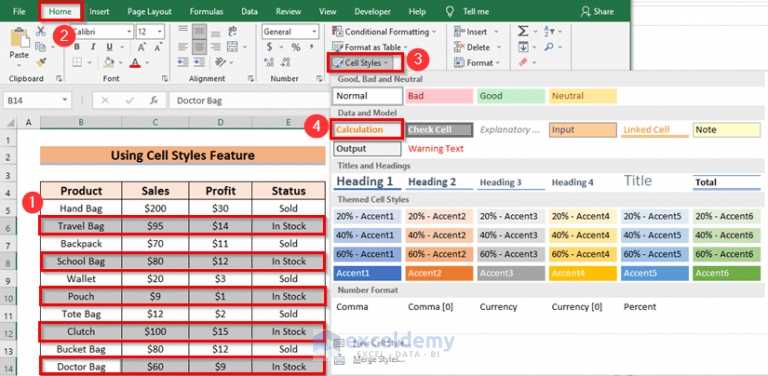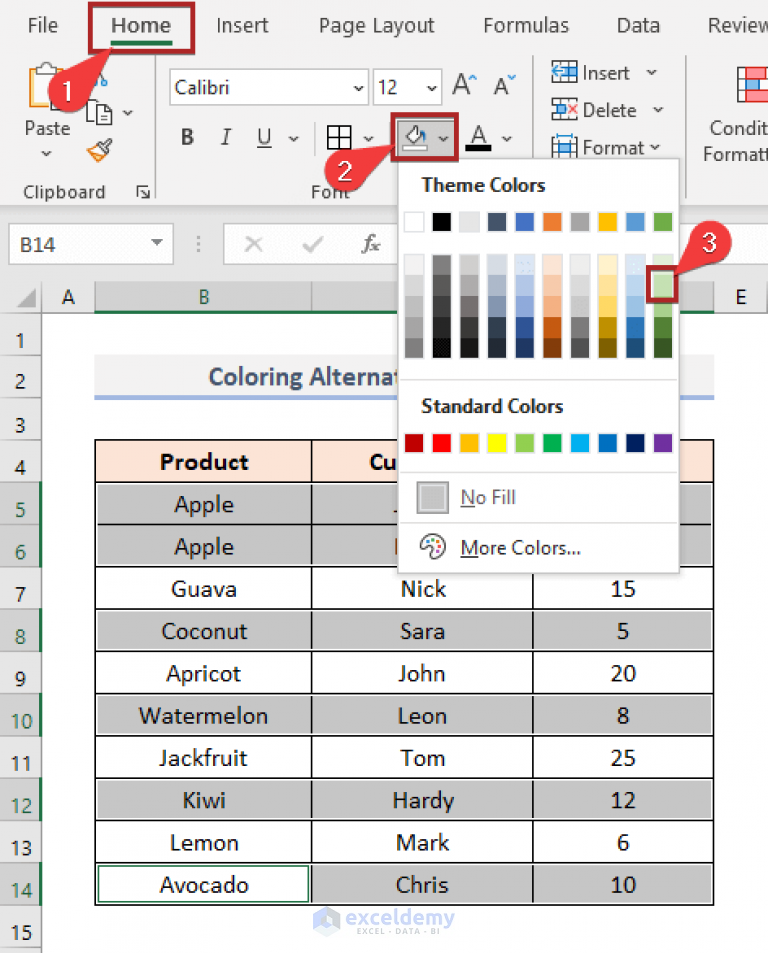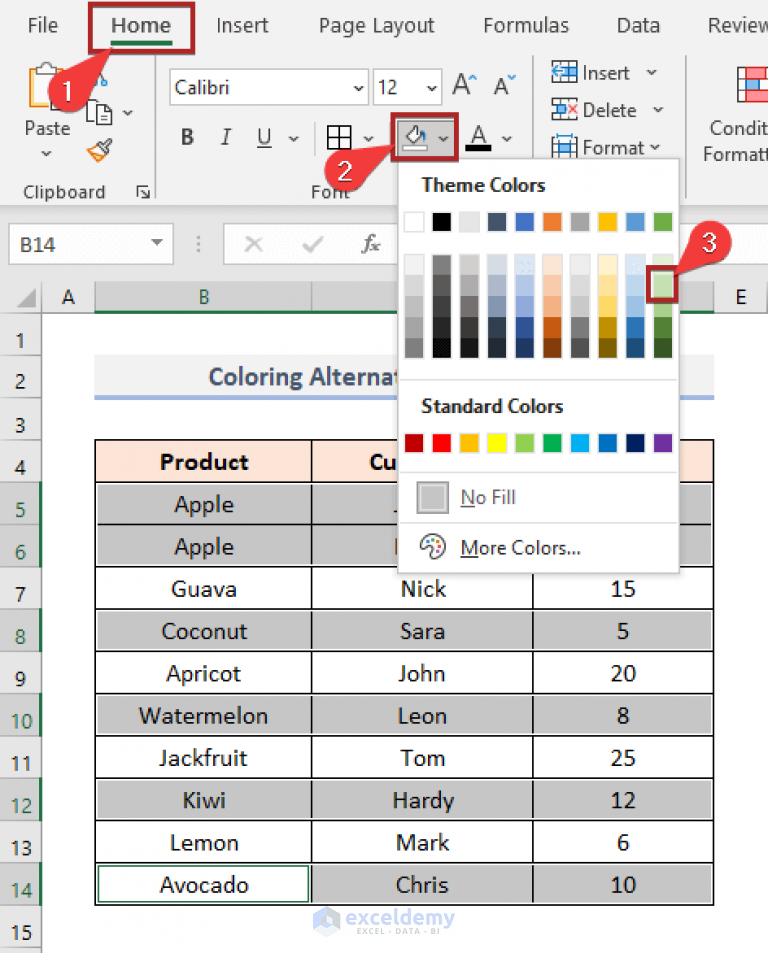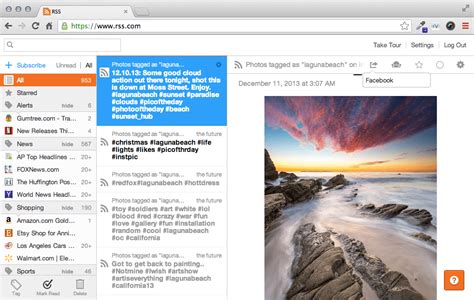Excel Formatting Trick: Alternate Row Colors

Enhancing productivity and data readability is a priority for many businesses and individuals utilizing Microsoft Excel. One simple yet effective technique to achieve this is by applying alternate row colors. This formatting trick not only makes your spreadsheet more visually appealing but also significantly improves data comprehension and analysis. In this article, we will delve into the process of implementing this feature, exploring its benefits and providing a step-by-step guide for both manual and automated methods.
Understanding the Benefits of Alternate Row Colors

The human eye is naturally drawn to patterns and contrasts. By implementing alternate row colors in Excel, you create a visual hierarchy that guides the viewer’s attention and facilitates easier data interpretation. This formatting technique is particularly beneficial when dealing with extensive datasets, as it aids in quickly identifying trends, outliers, and patterns. Additionally, alternate row colors enhance the overall aesthetic of your spreadsheet, making it more professional and polished.
Implementing Alternate Row Colors Manually

If you’re working with a relatively small dataset or prefer a more hands-on approach, manually formatting each row is an option. While it may be time-consuming for larger spreadsheets, this method provides precise control over the colors and styles used. Here’s a step-by-step guide to manually applying alternate row colors in Excel:
Step 1: Select the Data Range
Begin by selecting the range of cells that you want to format. This can be done by clicking and dragging your cursor across the desired cells or by using the keyboard shortcut Ctrl + A to select the entire sheet.
Step 2: Apply the First Color
With your data range selected, navigate to the “Home” tab in the Excel ribbon. Click on the “Fill Color” icon, which is typically located in the “Font” group. From the color palette that appears, choose the first color you want to apply to your alternate rows. Excel will automatically fill the selected cells with this color.
Step 3: Apply the Second Color
Now, you need to select the rows or cells that will have the second color. To do this, click on the first empty cell below your data range, then scroll down to the last cell of your dataset and shift-click to select the entire range. Repeat the process of choosing a “Fill Color” from the ribbon, but this time, select a different color for these rows. Excel will alternate between the two colors you’ve chosen for each row.
Step 4: Adjust Formatting as Needed
Once you’ve applied the alternate row colors, you can further refine your formatting by adjusting the font color, font style, or even adding borders to enhance the visual appeal. These adjustments can be made using the tools available in the “Home” tab of the Excel ribbon.
Automating Alternate Row Colors with Conditional Formatting
For larger datasets or if you want to save time and effort, Excel’s Conditional Formatting feature is an excellent tool to automate the process of applying alternate row colors. This feature allows you to define rules that automatically format your data based on specific criteria.
Step 1: Select the Data Range
Just as in the manual method, start by selecting the range of cells you want to format. This selection will determine the scope of your conditional formatting rule.
Step 2: Apply Conditional Formatting
Go to the “Home” tab and locate the “Styles” group. Click on the “Conditional Formatting” dropdown and select “New Rule”. In the New Formatting Rule dialog box, choose “Use a formula to determine which cells to format” and enter the following formula in the formula bar: =ISODD(ROW()). This formula will apply the formatting to odd-numbered rows.
Step 3: Choose the Color Format
With your formula in place, click on the “Format” button in the New Formatting Rule dialog box. This will open the Format Cells dialog. Navigate to the “Fill” tab and select the color you want to apply to the odd-numbered rows. Click “OK” to apply the color.
Step 4: Apply to Even-Numbered Rows
To format the even-numbered rows with a different color, repeat the process outlined in Step 2, but this time, use the formula =ISEVEN(ROW()) in the New Formatting Rule dialog box. Choose a different color for these rows to create the alternate row effect.
Real-World Application and Examples
The implementation of alternate row colors is particularly beneficial in various scenarios. For instance, when analyzing sales data over time, alternating colors can help identify seasonal trends or performance fluctuations. In project management, it can visually distinguish tasks by priority or completion status. Additionally, when presenting financial data, this formatting technique can emphasize key metrics or compare different budget scenarios.
| Data Category | Alternate Row Colors |
|---|---|
| Sales Performance | Red for negative growth, green for positive growth |
| Project Tasks | Blue for high priority, yellow for low priority |
| Budget Analysis | Shades of gray for different budget years |

Future Implications and Excel Advancements

As Excel continues to evolve, the integration of visual elements and data presentation tools becomes increasingly sophisticated. While alternate row colors are a basic yet powerful feature, future versions of Excel are likely to offer even more advanced visualization options. For instance, we might see the introduction of more complex conditional formatting rules, dynamic color scales, or even interactive visualizations that respond to user interactions.
Additionally, with the growing emphasis on data storytelling and visualization, Excel may integrate more seamlessly with other Microsoft applications, such as PowerPoint and Word, to create visually appealing and informative reports. These advancements will further enhance the user experience and empower professionals to communicate data insights more effectively.
Conclusion
Implementing alternate row colors in Excel is a simple yet impactful way to enhance your data analysis and presentation. Whether you opt for the manual or automated method, this formatting trick adds a layer of visual appeal and functionality to your spreadsheets. As you continue to explore Excel’s capabilities, remember that effective data visualization is a powerful tool in your professional arsenal, helping you communicate insights and drive decision-making.
Can I use more than two colors for alternate rows?
+Absolutely! While the manual method is more time-consuming, it offers complete control over the number and combination of colors used. For the automated method, you can achieve this by creating multiple conditional formatting rules, each targeting a specific row range and color.
Is there a way to apply alternate row colors without selecting the entire data range?
+Yes, you can use Excel’s Banded Rows feature. Go to the “View” tab and check the Banded Rows box in the “Workbook Views” group. This will automatically apply alternate row colors to your entire worksheet, including any new data you add.
Can I remove the alternate row colors once I’ve applied them?
+Certainly! To remove the alternate row colors, select the entire data range and then navigate to the “Home” tab. Click on the “Clear” dropdown and choose “Clear Formats”. This will revert your selected cells to their original, unformatted state.


